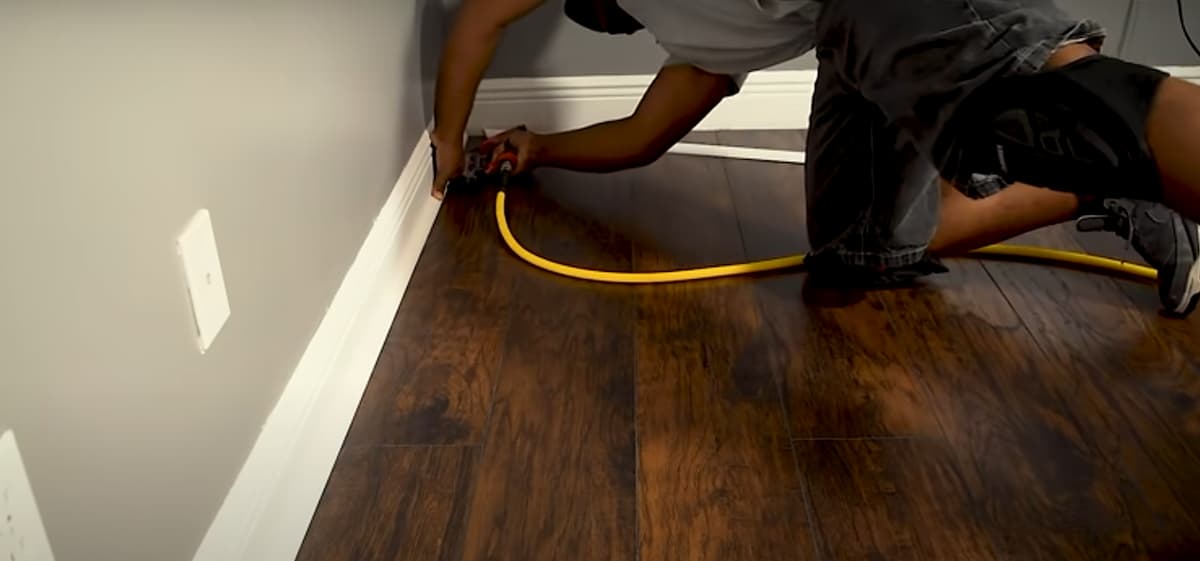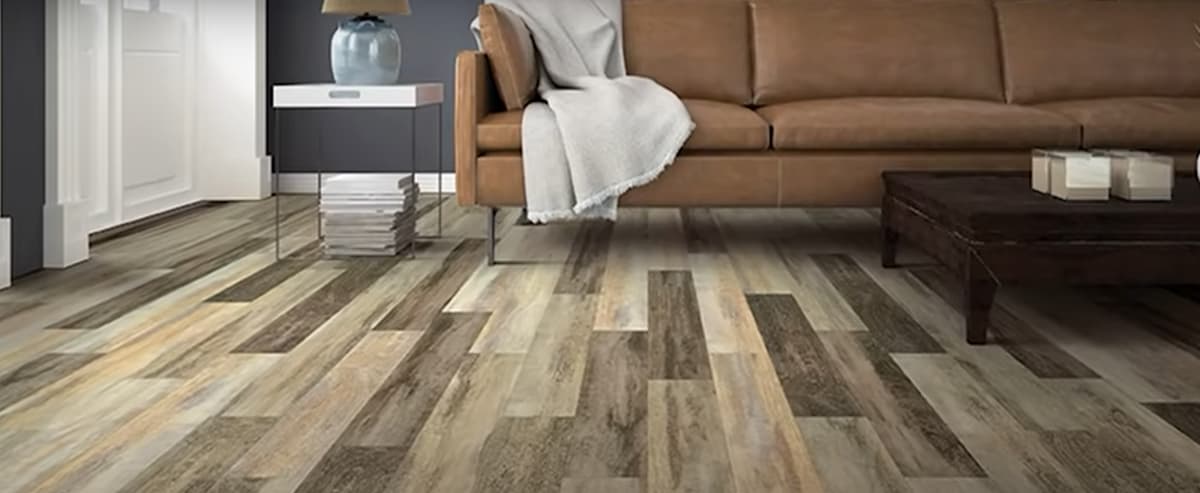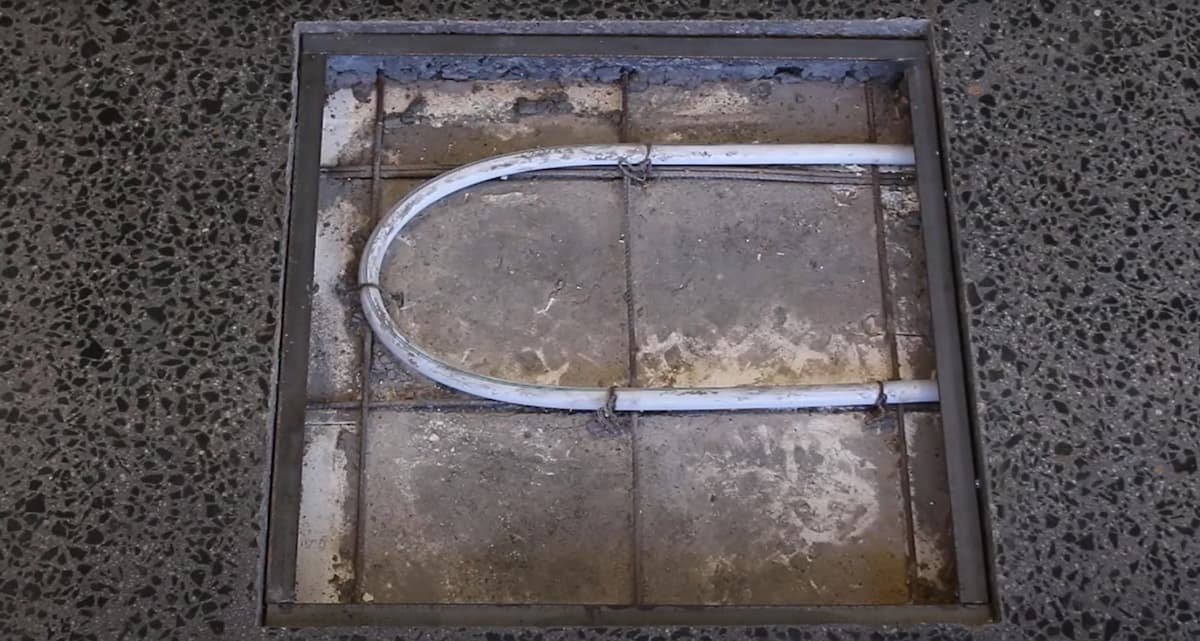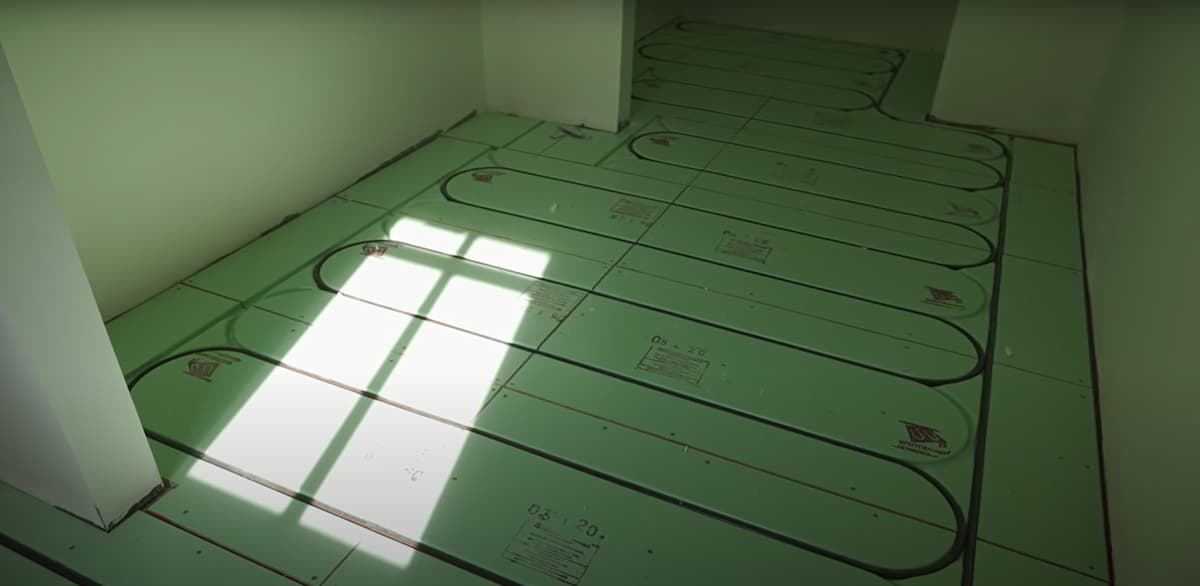
Engineers use moulding and casting to produce engineered flooring. The properties of the material, such as strength and weight, are important characteristics that can be controlled during manufacture. The level of sophistication in producing engineered timber floors is also increasing to include using resins and coatings for protection and appearance.
Engineered timber flooring connects three or more boards together like a puzzle. This makes timber flooring easier to install, provide better stability, and make the whole process quicker than if you were installing individual timber floorboards. Engineered timber flooring starts with the substrate, the base of your actual floor. The most common substrates are plywood or oriented strand board (OSB). The next step is choosing what type of wood you want to use, and what widths and grades they come in. Finally comes the glue that holds everything together.
Materials
Timber flooring is generally composed of three main components:
- Boards
- Subfloor
- Glue underlayment
Some engineered flooring options may include an additional component called ‘locking strips’. While these components can vary in material depending on manufacturer, traditional materials for each category include:
Boards
- Solid hardwood flooring (Oak)
- Solid softwood (Pine or Fir)
- Engineered hardwood flooring (Beech, Maple, Hickory)
- Engineered softwood (Pine, Spruce)
- Exotic hardwood flooring (Walnut, Cherry)
Subfloor
Unfinished plywood or OSB. Some engineered flooring products come with a factory-installed underlayment. Many of these types of surfaces may list both an underlayment and substrate as the components needed to install the product.
Glue Underlayment
Most glue underlayments are some form of urethane adhesive and some manufacturers may use two-part adhesives for added strength. The adhesive is applied to the top face of one board at a time before being placed in the puzzle pattern with the other boards so it doesn’t dry out too quickly.
Locking Strips
These are usually made up of the same type of wood as your flooring boards and come in various widths depending on your specific product. The locking strips interlock with the edges of each board to form a stable, unified flooring base once installed.
Engineered Flooring Types
While there are many types of finished hardwood floors, engineered floors offer added stability to reduce the movement caused by moisture levels, humidity, temperature changes, etc. Additionally, engineered hardwood provides increased sound insulation compared to standard solid hardwood. Finally, they’re generally less expensive than solid wood products due to the way they’re manufactured and fabricated offsite in a plant or factory then transported to your home where they’re assembled and installed.
Combination engineered flooring is a type of engineered flooring that provides the best attributes of multiple types or categories of this material. The most common types are:
- Solid hardwood flooring with a matching underlayment
- Engineered hardwood flooring with a locking strip
- Combination engineered softwood floor, which includes an underlayment and locking strips
Engineered Flooring Prices
In Australia, the cost of engineered wood planks varies from place to place and is dependent on a number of factors. The grade of the timber flooring, the widths it comes in, and whether or not you want a matching underlayment are all factors that may affect the final timber floor price. In order to find the best price for engineered flooring in your area, speak with a local flooring store near you. Usually, the timber flooring price can be as low as $60 and go as high as $110.
Engineered Flooring Installation Costs
In most cases, engineered flooring installation costs are comparable to solid wood flooring installation. There may be times when your product requires underlayment and possibly locking strips in order for the boards to properly lock together. In this case, you could expect a slightly higher price per square metre due to these additional components that need to be installed during installation.
Engineered Flooring Installation Cost
The timber flooring prices supplied on this page are for reference only and cannot be used as the actual quote to install your engineered flooring. The final price per square metre may depend on the actual type of engineered product for which you choose to go, the size of your room(s) and/or house, and any additional add-ons or upgrades that may require extra fees during installation. For a more accurate quote, please contact a local flooring store in your area that specializes in hardwood floor installation.
- 2 – 4mm Veneer: $70 per square metre – $90 per square metre.
- 4 – 6mm Veneer: $80 per square metre – $110 per square metre.
Engineered Flooring Installation Price
Installation of engineered flooring is one of the popular and widespread home improvement projects in Australia and New Zealand, and it’s no wonder why. Not only do these kinds of solid timber floors last longer than others, but they’re also incredibly easy to install and maintain over time.
They aren’t susceptible to water damage or other types of damage that can occur with other types of substrates, making them a solid investment for homeowners who want a durable material for their flooring installation project. In addition to being stylish, engineered timber flooring is also known for its ability to block noise transfer between rooms, which makes it a good choice for living and dining rooms.
A Floating Installation of Engineered Timber Flooring
A floating installation is the best way to go for engineered flooring. It’s recommended that the entire subfloor be extremely flat, free of any bumps or other imperfections that could cause your floor to come out uneven. Even the smallest bump can make an impact on how well your new floor looks, so it’s important to take care of this step first and foremost before placing the engineered flooring down.
Engineered Flooring Installation Cost
In most cases, the price of a solid wood flooring installation is not significantly lower than the cost of an engineered hardwood flooring installation in Australia and New Zealand. The flooring cost you could expect to spend between $25 per square metre and $40 per square metre in order to get your new flooring installed in your house. However, there are some exceptions that can result in the price is lower than this average cost, such as when buying custom lengths or widths of wood at a discounted price.
Direct-stick Installation of Engineered Timber Flooring
The best and most cost-effective method of installation is the Direct-Stick method. These ‘floating’ flooring planks can be glued to your subfloor without having to use any nails or screws. This means that you don’t have to worry about maintenance over time, such as replacing boards due to damage from nail punctures.
Direct Stick Engineered Flooring Installation Cost
The cost of direct-stick installation for engineered flooring is usually between $40 and $50 per square metre, which includes materials. The subfloor needs to be extremely flat before applying the planks, so you could expect to pay an additional fee if this step requires levelling or filling in any holes.

Types of Engineered Flooring
Engineered flooring is available in a wide range of styles and designs, including:
Solid or ‘real wood’ hardwood flooring. These types of planks are made from a single piece of solid timber that has been cut to size and glued together to create a certain pattern or design. As the name suggests, this type of solid timber floor could be mistaken for real hardwood if you don’t look closely enough. Engineered parquet flooring can also come with different varnishes and stains to make your new flooring even more unique.
Laminate Engineered Wood Flooring
Laminate engineered timber floors are made from multiple layers of high-density fibreboard, which have been topped off with a thin layer of plastic that’s designed to imitate real hardwood. It’s difficult to tell the difference between laminate flooring and solid wood floors, but you can tell if you put your hand under one of the planks, wooden floors are much more solid underneath, while laminate is hollow. Laminate flooring is easy to install and maintain. It’s also resistant to water damage and heat, so it’s a good choice for kitchens and bathrooms.
Wall-to-wall Engineered Flooring
Engineered wall-to-wall floors are designed with large rolls that are matched up together in order to cover an entire room at once. The benefit of this type of installation is that it’s proportional throughout your entire home without having to make complex cuts around obstacles or problem areas. This means that you won’t have any unsightly patches after your new floor has been installed.
Why is a Level Subfloor Crucial?
A level subfloor is crucial for engineered flooring, especially when you’re using the direct stick method. The planks need to be installed on an extremely flat and sturdy surface in order to avoid any warping or shifting while they dry and adhere to the floor.
Engineered Floors and Moisture Levels
One of the main concerns that homeowners have about installing engineered hardwood floors is whether they’ll be able to handle moisture levels within their homes. While there are some types of engineered wood floors that can’t deal with high humidity, composite wood is designed to hold up even in wet areas such as bathrooms and kitchens. Be sure about which type you’re buying before making a purchase since this may also influence the installation cost throughout your entire home.
Most companies may offer free installation quotes and estimates, so it’s a good idea to get in touch with several different professionals before making a decision. This way you’ll be able to compare prices and quality of workmanship to find the perfect company for your home renovation project.
Factors Impacting the Cost of Hardwood Flooring?
There are many factors that impact the hardwood flooring cost. The most significant factors that may impact the hardwood flooring cost includes.
The Size of the Order
The more you order, the lower each unit cost may be for your material. This is also known as buying in bulk and can bring about savings if done correctly. You may want to carefully determine what materials you require and then calculate how much you need before making a final decision about where to purchase from.
Product Type
Each manufacturer offers different types of products at varying price points and with unique features and benefits that may or may not suit your needs. Spend some time considering which type of engineered Wood Flooring would work best for your job site or project before committing to one particular manufacturer over another based on price alone.
Sub-floor Conditions
Although rare, there are occasions in which the existing sub-floor is in a condition too far gone to install engineered Wood Flooring. In these instances, a contractor may need to add stabilizing materials or perform additional prep work prior to beginning installation. This may add cost and time to your project, so it is important that you are informed of any prerequisites beforehand.
Location
Many contractors charge extra when they have to travel outside their normal service area for any reason including visiting your job site or moving from one client’s home to another across town. They often calculate this into the overall price quoted, but it is important that you understand what factors can influence this type of fee. These costs could be avoided if proper planning was involved prior to starting your project, so keep them in mind when discussing your job with a contractor.





